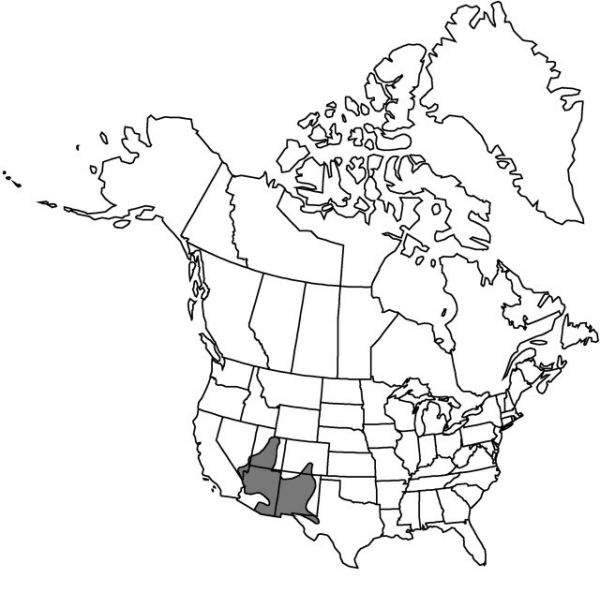Sisyrinchium demissum
Pittonia 2: 69. 1890.
Herbs, perennial, cespitose, light green to olive when dry, to 5 dm, often somewhat glaucous. Stems branched, with 1 or 2 nodes, 1–2(–2.3) mm wide, glabrous, margins entire to denticulate apically, occasionally white-cartilaginous; first internode 8–34 cm, usually longer than leaves; distalmost node with 2–3 branches. Leaf blades glabrous, bases not persistent in fibrous tufts. Inflorescences borne singly; spathes green, obviously wider than supporting branch, glabrous, keels entire to denticulate; outer 11–26 mm, 2.5 mm shorter to 5 mm longer than inner, tapering evenly towards apex, margins basally connate 3.3–8 mm; inner with keel evenly curved to straight, hyaline margins 0.2–0.4 mm wide, apex acute to acuminate, ending 0.1–1.1 mm proximal to green apex. Flowers: tepals dark bluish violet, bases yellow; outer tepals 6–15 mm, apex rounded to acute or occasionally emarginate, aristate; filaments connate ± entirely, stipitate-glandular basally; ovary similar in color to foliage. Capsules beige to tan, globose, 4–7.5+ mm; pedicel erect to ascending. Seeds globose to obconic, lacking obvious depression, 0.8–2 mm, granular or slightly rugulose. 2n = 32, 64.
Phenology: Flowering mid spring–early fall.
Habitat: Moist areas, springs, stream banks, meadows, forest seeps
Elevation: 500–2900 m
Distribution

Ariz., Colo., Nev., N.Mex., Tex., Utah, n Mexico.
Discussion
Previously, we (A. F. Cholewa and D. M. Henderson 1984) misidentified the octoploid northern Utah populations of Sisyrinchium demissum as S. radicatum. New data indicate that these northern Utah populations rightly belong here as a polyploid race of S. demissum. Also see discussion under 18. S. radicatum.
Selected References
None.